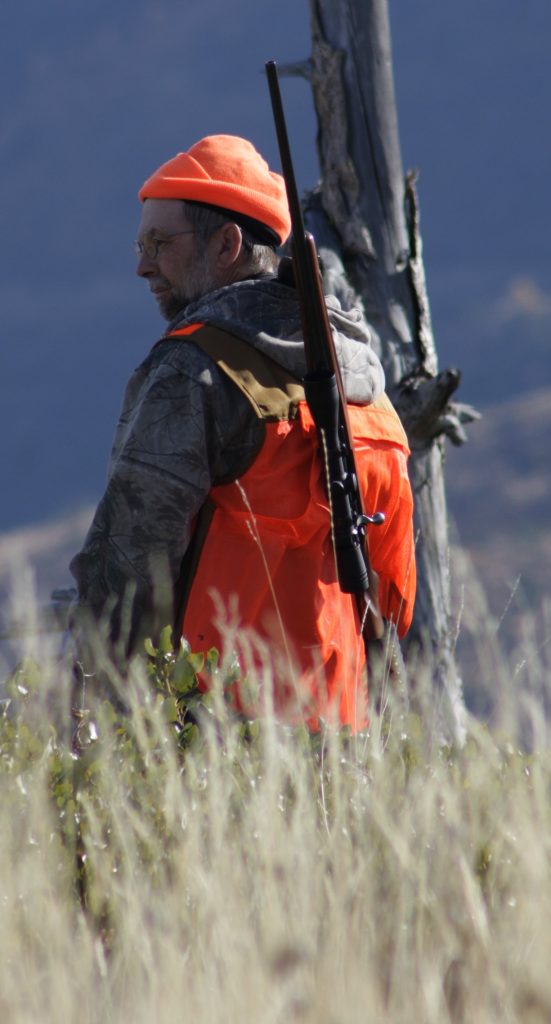
Continuing the Trump Administration’s efforts to increase recreational access on public lands, U.S. Secretary of the Interior David L. Bernhardt has announced a historic proposal for new and expanded hunting and fishing opportunities across more than 2.3 million acres at 97 national wildlife refuges and nine national fish hatcheries.
This proposed rule is the single largest expansion of hunting and fishing opportunities by the U.S. Fish and Wildlife Service (Service) in history, according to an Interior Department news release.
“America’s hunters and anglers now have something significant to look forward to in the fall as we plan to open and expand hunting and fishing opportunities across more acreage nationwide than the entire state of Delaware,” said Secretary Bernhardt. “The U.S. Fish and Wildlife Service’s Hunt Fish Chiefs have been instrumental in our effort over the past two years to streamline our regulations and identify new opportunities for sportsmen and women like no other previous administration.”
This proposed rule would create nearly 900 distinct new hunting and fishing opportunities (an opportunity is defined as one species on one field station in one state). On top of last year’s expansion of 1.4 million acres for new or expanded hunting and fishing opportunities, this proposal would bring the Trump Administration’s total expansion to 4 million acres nationwide.
The announcement garnered quick support from leaders of various sports and wildlife groups including the National Wild Turkey Federation, Coastal Conservation Association Florida, Safari Club International, Rocky Mountain Elk Foundation and Houston Safari Club Foundation/Houston Safari Club.
“Once the Trump Administration’s effort to eliminate the threat of COVID-19 has been successful, there will be no better way to celebrate than to get out and enjoy increased access for hunting and fishing on our public lands,” said Service Director Aurelia Skipwith. “I deeply appreciate everything sportswomen and men do for conservation and our economy, so I am delighted when we can do something to expand opportunities for them. I hope it will help encourage the next generation of hunters and anglers to continue on this rich American tradition.”
This proposal would bring the number of units in the Service’s National Wildlife Refuge System where the public may hunt to 399 and the number where fishing is permitted to 331. In addition, this rule proposes to formally open lands on nine units of the National Fish Hatchery System to hunting or sport fishing, the Interior Department said.
New proposed refuge opportunities include the opening of migratory bird hunting, upland game hunting, big game hunting, and sport fishing at Everglades Headwaters National Wildlife Refuge in Florida for the first time; the opening of Bamforth National Wildlife Refuge in Wyoming to upland game and big game hunting for the first time; and opening sport fishing for the first time and expanding existing migratory bird, upland game and big game hunting to new acres at Canaan Valley National Wildlife Refuge in West Virginia.
Proposed expansions of refuge opportunities include the expansion of existing big game hunting to new acres at Willapa National Wildlife Refuge in Washington state and Balcones Canyonlands National Wildlife Refuge in Texas; the expansion of season dates for existing pheasant hunting at San Luis National Wildlife Refuge in California; and the expansion of existing migratory bird hunting, upland game hunting, big game hunting and sport fishing to new acres at Northern Tallgrass Prairie National Wildlife Refuge in Minnesota.
Proposed changes at hatcheries include the formal opening of lands on Jordan River National Fish Hatchery in Michigan to migratory bird, upland game and big game hunting; the formal opening of lands on Berkshire National Fish Hatchery in Massachusetts to sport fishing; and the formal opening of lands at Little White Salmon National Fish Hatchery in Washington state to migratory bird, upland game and big game hunting.
The proposed rule also continues the effort from last year’s rule toward revising refuge hunting and fishing regulations so they more closely match state regulations where the refuge is located. This year’s rule also takes a further step in proposing revisions that ensure whenever refuge regulations depart from state regulations, for safety or conservation compatibility reasons, these extra regulations are consistent across all refuges in a given state. The Department worked closely with the states in preparing the proposed rule.
The Service will seek comments from the public on the proposed rule for 60 days, beginning with publication in the Federal Register on April 9, 2020. The notice will be available at http://www.regulations.gov, Docket Number: FWS-HQ-NWRS-2020-0013, and will include details on how to submit comments.
The Department intends to finalize the proposed changes in time for the upcoming 2020-2021 hunting seasons. A complete list of all refuges and hatcheries in the proposal is available in the proposed rule. View an online list and map.
Background

America’s sportsmen and women generated nearly $1 billion in excise taxes last year, supporting critical state conservation programs. These funds are generated by excise tax collections on hunting, shooting and fishing equipment and boat fuel that is distributed to all 50 states and U.S. territories by the Service.
To date, the Service has distributed more than $22.9 billion in apportionments for state conservation and recreation projects. The recipient state wildlife agencies have matched these funds with approximately $7.6 billion throughout the years, primarily through hunting and fishing license revenues.
In addition to excise taxes collected from these activities, hunting, fishing and other outdoor activities contributed more than $156 billion in economic activity in communities across the United States in 2016, the most recent data available from the Service’s National Survey of Fishing, Hunting and Wildlife-Associated Recreation, published every five years. More than 101 million Americans — 40 percent of the U.S. population age 16 and older — pursue wildlife-related recreation, including hunting and fishing.



